
The Enchanting Wilderness of Bankhead National Forest
Discover the natural beauty and rich biodiversity of Bankhead National Forest in Alabama, home to stunning waterfalls, diverse wildlife, and serene hiking trails.
Bankhead National Forest, located in the northwestern region of Alabama, is a sprawling natural paradise that promises an unforgettable outdoor adventure. Covering over 180,000 acres, this forest is renowned for its dense woodlands, meandering streams, and stunning waterfalls. Rich in biodiversity, it is a haven for nature lovers, hikers, and wildlife enthusiasts. One of the forest's most captivating features is the Sipsey Wilderness, often referred to as the 'Land of a Thousand Waterfalls.' Here, visitors can explore deep canyons, ancient rock formations, and lush greenery. The trails vary in difficulty, making it accessible for both seasoned hikers and casual walkers. Canoeing and kayaking on the Sipsey River offer a serene way to absorb the beauty of the forest from a different perspective. Fishing enthusiasts will find abundant opportunities to catch bass, catfish, and sunfish in the forest's many streams and lakes. For those who prefer a more relaxed visit, there are numerous picnic spots and campsites where you can enjoy the tranquility of the woods. Wildlife spotting is another highlight of Bankhead National Forest. The area is home to a variety of animals, including white-tailed deer, wild turkeys, and even the elusive bobcat. Bird watchers can look forward to seeing an array of bird species, from woodpeckers to hawks. Whether you are seeking an adrenaline-pumping adventure or a peaceful retreat into nature, Bankhead National Forest offers something for everyone. Its rich history, diverse ecosystems, and breathtaking scenery make it a must-visit destination for any outdoor enthusiast.
Local tips in Bankhead National Forest
- Visit during spring or fall for the best weather and vibrant foliage.
- Wear sturdy hiking boots as some trails can be rocky and uneven.
- Carry insect repellent, especially during the summer months.
- Bring a detailed map or GPS as cell service can be spotty in some areas.
- Pack plenty of water and snacks, especially if you plan on long hikes.
- Check local regulations for fishing and camping permits.
- Early mornings are the best time for wildlife spotting.
- Respect the Leave No Trace principles to keep the forest pristine.
When is the best time to go to Bankhead National Forest?
Iconic landmarks you can’t miss
Randolph Trail Head Parking, Bankhead National Forest
Discover Randolph Trail Head Parking in Bankhead National Forest, a serene escape into Alabama's natural beauty with stunning trails and picturesque landscapes.

Tuskegee National Forest
Experience the breathtaking beauty of Tuskegee National Forest, a hidden gem in Alabama offering hiking, fishing, and wildlife adventures.

William B. Bankhead National Forest
Experience the peaceful allure of William B. Bankhead National Forest, a natural paradise in Alabama perfect for outdoor adventures and serene getaways.

Unmissable attractions to see
Natural Bridge Park
Explore Natural Bridge Park, Alabama's stunning natural wonder featuring the longest natural bridge in the U.S. Experience breathtaking views and serene trails.
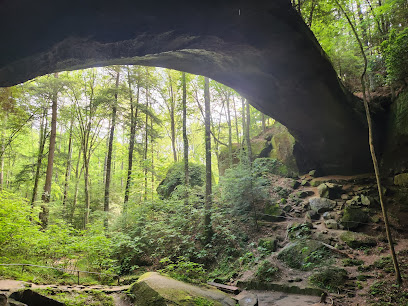
Sipsey Wilderness
Discover the natural splendor of Sipsey Wilderness, a stunning national forest in Alabama, perfect for outdoor adventures and serene escapes.

Bankhead Heritage House and Museum
Explore the Bankhead Heritage House and Museum, a historical treasure in Jasper, Alabama, showcasing the legacy of the Bankhead family and local heritage.

Natural Bridge Picnic Area
Discover the Natural Bridge Picnic Area in Alabama, where stunning geological formations meet serene picnic spots in the great outdoors.

Markets, malls and hidden boutiques
The Shops of Grand River
Discover unbeatable deals at The Shops of Grand River, Alabama's premier outlet mall with a diverse range of shopping and dining options.

Bankhead National Forest
Experience the natural wonders of Bankhead National Forest in Alabama, where adventure and tranquility await in the heart of nature.

Martin's Family Clothing
Explore a vast selection of stylish clothing at Martin's Family Clothing in Decatur, Alabama, where fashion meets friendly service.

Gardendale Flea Mall & Antique Center
Explore the Gardendale Flea Mall & Antique Center for an unforgettable shopping experience filled with unique antiques and collectibles.

Jasper Pickers
Explore the charm of Jasper Pickers, a unique antique store and flea market in Alabama, filled with rare finds and local treasures.

DG Market
Explore DG Market in Addison, Alabama – your go-to dollar store for groceries, party supplies, and more at unbeatable prices.
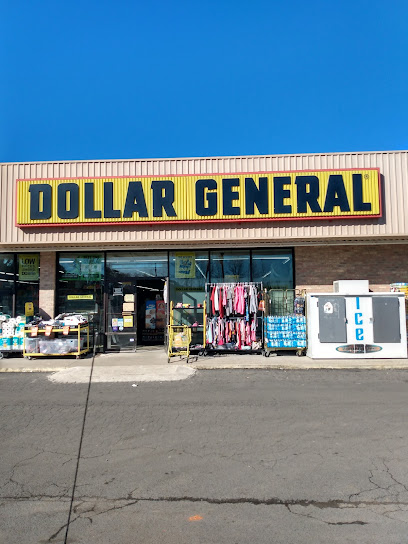
The Something Blue Shoppe
Discover bridal elegance at The Something Blue Shoppe in Hartselle, AL, where personalized service meets a stunning collection of wedding gowns and formal wear.

Southern Accents Architectural Antiques
Discover the charm of history at Southern Accents Architectural Antiques in Cullman, Alabama, where timeless treasures await every visitor.

Alabama Goods
Explore Alabama Goods, a charming gift shop in Homewood, offering local treasures, handcrafted gifts, and memorable souvenirs from Alabama.
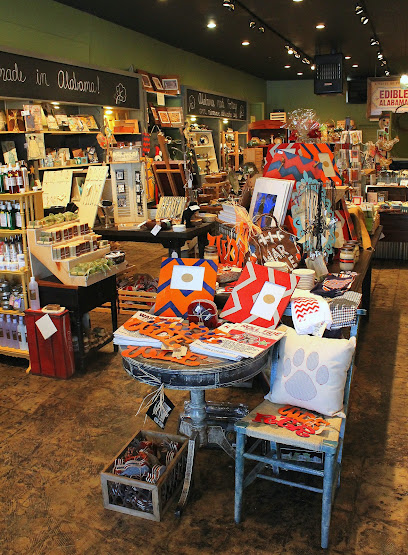
Vintage Trading Post LLC
Explore a treasure trove of antiques and vintage collectibles at Vintage Trading Post LLC in Jasper, Alabama, where every piece has a story.
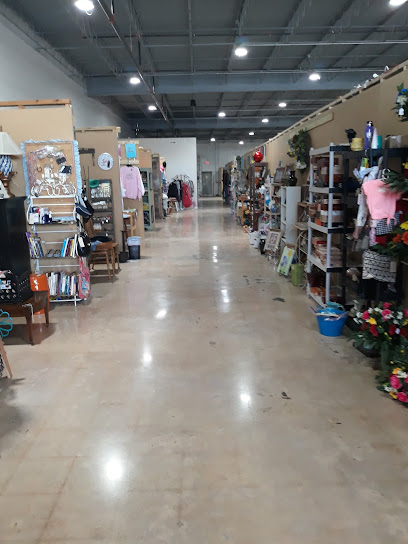
The Curiosity Shop
Experience the charm of Jasper, Alabama at The Curiosity Shop - your destination for unique apparel and local artisan treasures.

O-Baby Children's Boutique
Discover a world of adorable baby fashion and delightful accessories at O-Baby Children's Boutique in Cullman, Alabama.
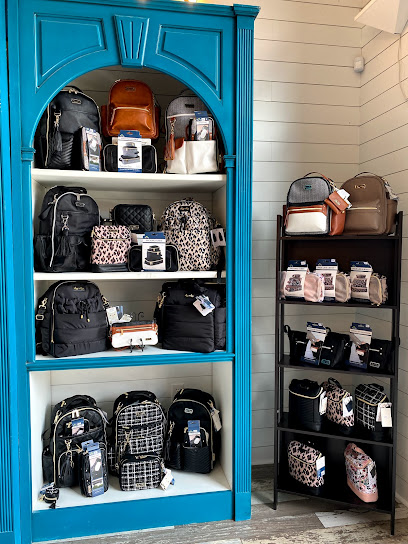
The Cupboard
Explore The Cupboard in Decatur, Alabama, a unique gift shop offering handcrafted pottery, fine teas, and quality kitchen supplies for every occasion.

Carol's Boutique
Explore stylish women's clothing at Carol's Boutique in Jasper, Alabama, where unique fashion meets a friendly atmosphere for an unforgettable shopping experience.

Stephen's Unique Antique Mall
Uncover hidden gems and vintage treasures at Stephen's Unique Antique Mall in Rogersville, Alabama, where every corner tells a story.

Essential bars & hidden hideouts
Avenue Pub - Downtown Tuscaloosa
Discover Avenue Pub in Downtown Tuscaloosa for a vibrant American dining experience filled with delicious flavors and a lively atmosphere.

Chef Troy's Talk of the Town
Discover Chef Troy's Talk of the Town, a seafood treasure in Houston, Alabama, offering delightful breakfasts and a cozy dining atmosphere.

Lakeshore Inn Restaurant
Discover the Lakeshore Inn Restaurant in Alabama for a delightful American dining experience with stunning lakeside views.

Jack's
Experience the best of Southern fast food at Jack's in Addison, AL, serving breakfast, burgers, and homemade classics with a friendly smile.

Alcove
Discover Alcove in Tuscaloosa, a lively bar and grill offering delicious food and a fantastic drink selection in a cozy atmosphere.

Sipsey River Picnic Area
Discover the beauty of the Sipsey River Picnic Area, an idyllic spot for hiking, picnicking, and immersing yourself in Alabama's stunning natural landscapes.

Pilcrow Cocktail Cellar
Discover Pilcrow Cocktail Cellar in Birmingham, AL, where expertly crafted cocktails meet a cozy, vibrant atmosphere for an unforgettable night out.

Buena Vista
Discover the authentic flavors of Mexico at Buena Vista, a beloved restaurant in Double Springs, Alabama, perfect for every taco lover.

The Recovery Room Bar
Experience the vibrant atmosphere and extensive drink selection at The Recovery Room Bar in Dothan, Alabama - a local favorite for nightlife.

Sapore Grill
Experience authentic Italian flavors at Sapore Grill, where fresh ingredients meet traditional recipes in a warm, inviting atmosphere.
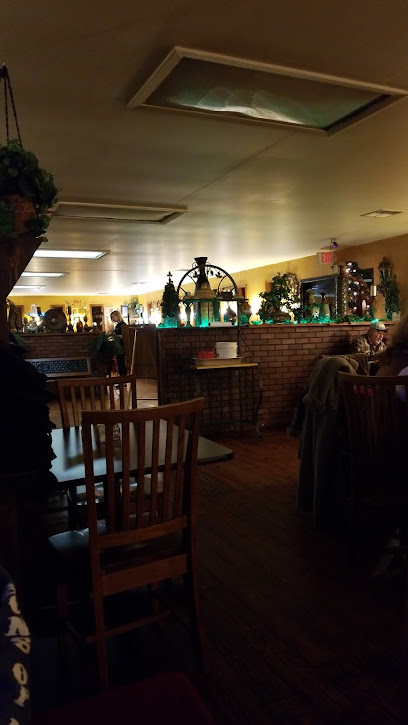
Catch 22
Experience the vibrant atmosphere and innovative cocktails at Catch 22, a must-visit cocktail bar in Tuscaloosa, Alabama.

The Food Shack
Discover The Food Shack in Addison, AL – a cozy spot for delicious hamburgers, tasty sandwiches, and delightful ice cream treats.

House of Found Objects
Experience the eclectic charm of The House of Found Objects, Birmingham's must-visit bar for unique cocktails and vibrant atmosphere.

River Cafe Sports Bar
Discover the lively River Cafe Sports Bar in Adger, Alabama - a perfect blend of delicious food, great drinks, and sports entertainment.

Jake's Bar & Grill
Experience the vibrant atmosphere and delightful flavors at Jake's Bar & Grill, a must-visit destination in Dothan, Alabama.

Local Phrases about Bankhead National Forest
-
- HelloHey y'all
[Hey y'all] - GoodbyeSee ya later
[See ya later] - YesYessir
[Yessir] - NoNah
[Nah] - Please/You're welcomePlease/No problem
[Please/No problem] - Thank youThank ya kindly
[Thank ya kindly] - Excuse me/Sorry‘Scuse me/My bad
['Scuse me/My bad] - How are you?How y'all doin'?
[How y'all doin'?] - Fine. And you?I'm good. And you?
[I'm good. And you?] - Do you speak English?Y'all speak English?
[Y'all speak English?] - I don't understandI ain't got a clue
[I ain't got a clue]
- HelloHey y'all
-
- I'd like to see the menu, pleaseCan I check out the menu?
[Can I check out the menu?] - I don't eat meatI don't do meat
[I don't do meat] - Cheers!Cheers!
[Cheers!] - I would like to pay, pleaseI'm ready to settle up
[I'm ready to settle up]
- I'd like to see the menu, pleaseCan I check out the menu?
-
- Help!Help!
[Help!] - Go away!Git!
[Git!] - Call the Police!Ring up the Sheriff!
[Ring up the Sheriff!] - Call a doctor!Get the Doc!
[Get the Doc!] - I'm lostDone got turned around
[Done got turned around] - I'm illI'm feelin' poorly
[I'm feelin' poorly]
- Help!Help!
-
- I'd like to buy...I'm fixin' to get...
[I'm fixin' to get...] - I'm just lookingJust browsin'
[Just browsin'] - How much is it?What's the damage?
[What's the damage?] - That's too expensiveThat's way steep
[That's way steep] - Can you lower the price?Can ya wiggle on the price?
[Can ya wiggle on the price?]
- I'd like to buy...I'm fixin' to get...
-
- What time is it?What's the time?
[What's the time?] - It's one o'clockIt's one o'clock
[It's one o'clock] - Half past (10)Half past ten
[Half past ten] - MorningMornin'
[Mornin'] - AfternoonAfternoon
[Afternoon] - EveningEvenin'
[Evenin'] - YesterdayYest'day
[Yest'day] - TodayToday
[Today] - TomorrowTomorra
[Tomorra] - 1One
[One] - 2Two
[Two] - 3Three
[Three] - 4Four
[Four] - 5Five
[Five] - 6Six
[Six] - 7Seven
[Seven] - 8Eight
[Eight] - 9Nine
[Nine] - 10Ten
[Ten]
- What time is it?What's the time?
-
- Where's a/the...?Where's the...?
[Where's the...?] - What's the address?What's the address?
[What's the address?] - Can you show me (on the map)?Can you show me (on the map)?
[Can you show me (on the map)?] - When's the next (bus)?When's the next (bus)?
[When's the next (bus)?] - A ticket (to ....)A ticket (to ....)
[A ticket (to ....)]
- Where's a/the...?Where's the...?
History of Bankhead National Forest
-
Bankhead National Forest, named after John H. Bankhead, a prominent Alabama politician, was established in 1918. The forest covers over 180,000 acres and is known for its diverse ecosystems, ranging from hardwood forests to pine groves. The establishment of the forest was part of a broader movement to conserve natural resources and promote sustainable land management in the early 20th century.
-
Long before European settlers arrived, the land that is now Bankhead National Forest was inhabited by Native American tribes, including the Cherokee and Creek. These indigenous peoples utilized the forest's abundant resources for hunting, fishing, and gathering. Numerous archaeological sites, such as ancient rock carvings and pottery remnants, provide evidence of their rich cultural heritage and deep connection to the land.
-
During the Great Depression in the 1930s, the Civilian Conservation Corps (CCC) played a significant role in developing Bankhead National Forest. The CCC, a New Deal program, provided jobs to young men and focused on natural resource conservation. The workers built roads, trails, and recreational facilities, many of which are still in use today. Their efforts greatly improved accessibility and laid the foundation for the forest's modern infrastructure.
-
Designated as a wilderness area in 1975, the Sipsey Wilderness within Bankhead National Forest is Alabama's first national wilderness area. Covering over 24,000 acres, it is renowned for its stunning natural beauty, including waterfalls, sandstone cliffs, and ancient forests. The Sipsey Wilderness is also home to the Sipsey River, one of the few remaining free-flowing rivers in the Southeast, which supports a diverse range of wildlife and plant species.
-
Although not located directly within the boundaries of Bankhead National Forest, the Battle of Day's Gap during the American Civil War took place nearby, influencing the region's history. Fought on April 30, 1863, the battle was part of Union Colonel Abel Streight's raid to cut Confederate supply lines. The encounter with Confederate General Nathan Bedford Forrest's cavalry resulted in a tactical stalemate, but it had lasting impacts on the local communities and their involvement in the war.
-
The Kinlock Shelter, a significant archaeological and cultural site within Bankhead National Forest, has long been a place of shelter and ceremony for Native American tribes. This rock shelter features ancient petroglyphs and is considered sacred by the descendants of those who once inhabited the area. The site offers a glimpse into the spiritual and daily lives of the region's earliest inhabitants.
-
In recent years, Bankhead National Forest has been the focus of various conservation initiatives aimed at preserving its unique ecosystems and biodiversity. Efforts include habitat restoration, invasive species control, and sustainable forestry practices. These initiatives are supported by local communities, environmental organizations, and government agencies, working together to ensure the forest remains a vital natural resource for future generations.
Bankhead National Forest Essentials
-
Bankhead National Forest is located in northwestern Alabama. The nearest major city is Huntsville, which is approximately 70 miles away. The closest airport is Huntsville International Airport (HSV). From there, you can rent a car and drive to the forest, which typically takes about 1.5 hours. Alternatively, you can fly into Birmingham-Shuttlesworth International Airport (BHM), which is about 90 miles from the forest. Driving from Birmingham to Bankhead National Forest takes around 2 hours.
-
The most convenient way to explore Bankhead National Forest is by car. There are several well-maintained roads and parking areas within the forest. While there is no public transportation directly serving the forest, you can use ride-sharing services from nearby cities like Huntsville or Birmingham to reach the forest. Renting a car is highly recommended for flexibility and ease of access to various trails and points of interest.
-
The official currency is the United States Dollar (USD). Credit and debit cards are widely accepted, but it is advisable to carry some cash, especially for smaller establishments or if you plan to purchase items from local vendors. ATMs are available in nearby towns such as Moulton and Double Springs, but options within the forest are limited.
-
Bankhead National Forest is generally safe for visitors. However, it is advisable to take standard safety precautions. Always lock your vehicle and do not leave valuables in plain sight. Be cautious when hiking and stay on marked trails. There are no specific high-crime areas targeting tourists within the forest, but it is always best to stay vigilant and aware of your surroundings. Inform someone about your plans before heading into remote areas.
-
In case of emergency, dial 911 for immediate assistance. The nearest medical facilities are located in the towns of Moulton and Double Springs. It is highly recommended to have travel insurance that covers medical emergencies. For minor health issues, carry a basic first-aid kit. Cellular service might be limited in some areas of the forest, so consider carrying a satellite phone or a personal locator beacon if you plan on exploring remote areas.
-
Fashion: Do wear comfortable, weather-appropriate clothing and sturdy hiking boots. Avoid wearing high heels or flip-flops. Religion: Do respect any religious or cultural sites you may come across by maintaining a quiet and respectful demeanor. Public Transport: Do note that there is no public transport within the forest, so plan your travel accordingly. Greetings: Do greet fellow hikers and locals with a friendly nod or a wave. Eating & Drinking: Do pack out all trash and leave no trace. Don't feed wildlife or leave food unattended, as it can attract animals.
-
To experience Bankhead National Forest like a local, visit the Sipsey Wilderness, known for its stunning waterfalls and diverse flora and fauna. Engage with local rangers for tips on lesser-known trails and scenic spots. Attend any ranger-led programs or workshops to learn more about the forest's history and ecology. Don't miss the Kinlock Shelter, a significant archaeological site with ancient Native American petroglyphs.
Nearby Cities to Bankhead National Forest
-
Things To Do in Huntsville
-
Things To Do in Tuscaloosa
-
Things To Do in Tupelo
-
Things To Do in Gadsden
-
Things To Do in Columbia
-
Things To Do in Starkville
-
Things To Do in Franklin
-
Things To Do in Murfreesboro
-
Things To Do in Selma
-
Things To Do in Chattanooga
-
Things To Do in Smyrna
-
Things To Do in Prattville
-
Things To Do in Nashville
-
Things To Do in Montgomery
-
Things To Do in Grenada





